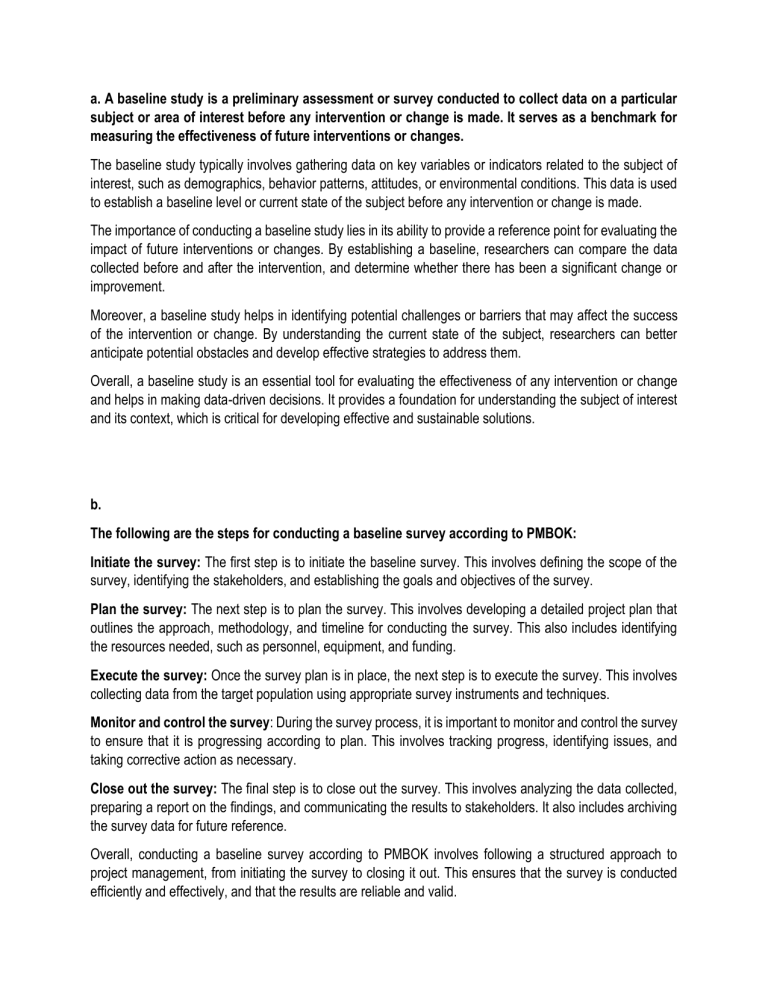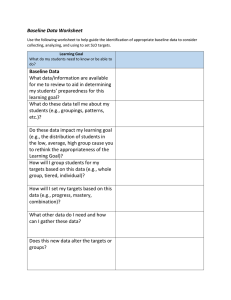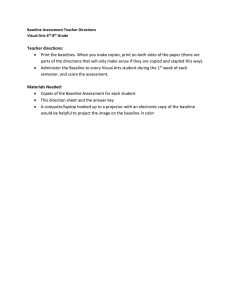
a. A baseline study is a preliminary assessment or survey conducted to collect data on a particular subject or area of interest before any intervention or change is made. It serves as a benchmark for measuring the effectiveness of future interventions or changes. The baseline study typically involves gathering data on key variables or indicators related to the subject of interest, such as demographics, behavior patterns, attitudes, or environmental conditions. This data is used to establish a baseline level or current state of the subject before any intervention or change is made. The importance of conducting a baseline study lies in its ability to provide a reference point for evaluating the impact of future interventions or changes. By establishing a baseline, researchers can compare the data collected before and after the intervention, and determine whether there has been a significant change or improvement. Moreover, a baseline study helps in identifying potential challenges or barriers that may affect the success of the intervention or change. By understanding the current state of the subject, researchers can better anticipate potential obstacles and develop effective strategies to address them. Overall, a baseline study is an essential tool for evaluating the effectiveness of any intervention or change and helps in making data-driven decisions. It provides a foundation for understanding the subject of interest and its context, which is critical for developing effective and sustainable solutions. b. The following are the steps for conducting a baseline survey according to PMBOK: Initiate the survey: The first step is to initiate the baseline survey. This involves defining the scope of the survey, identifying the stakeholders, and establishing the goals and objectives of the survey. Plan the survey: The next step is to plan the survey. This involves developing a detailed project plan that outlines the approach, methodology, and timeline for conducting the survey. This also includes identifying the resources needed, such as personnel, equipment, and funding. Execute the survey: Once the survey plan is in place, the next step is to execute the survey. This involves collecting data from the target population using appropriate survey instruments and techniques. Monitor and control the survey: During the survey process, it is important to monitor and control the survey to ensure that it is progressing according to plan. This involves tracking progress, identifying issues, and taking corrective action as necessary. Close out the survey: The final step is to close out the survey. This involves analyzing the data collected, preparing a report on the findings, and communicating the results to stakeholders. It also includes archiving the survey data for future reference. Overall, conducting a baseline survey according to PMBOK involves following a structured approach to project management, from initiating the survey to closing it out. This ensures that the survey is conducted efficiently and effectively, and that the results are reliable and valid. c. There are several challenges that can be faced when conducting a baseline study according to PMBOK. Some of the most common challenges include: Identifying the appropriate scope: One of the biggest challenges is defining the scope of the survey. This involves determining the variables to be measured, the population to be surveyed, and the timeframe for conducting the survey. Selecting a representative sample: Another challenge is selecting a representative sample that is diverse enough to capture a range of perspectives and experiences. This involves identifying the appropriate sample size, as well as selecting the right sampling method. Developing an appropriate survey instrument: Developing an appropriate survey instrument can also be challenging, particularly if the subject of interest is complex or difficult to measure. This involves designing questions that are clear, concise, and unbiased, and that can capture the relevant data. Collecting reliable and valid data: Collecting reliable and valid data can be challenging, particularly if the survey involves sensitive or controversial topics. This involves ensuring that the data collection process is transparent, and that participants are comfortable and willing to share their views. Analyzing and reporting the data: Analyzing and reporting the data can also be challenging, particularly if the data is complex or difficult to interpret. This involves using appropriate statistical tools and techniques, and presenting the data in a clear and concise manner. Managing resources and timelines: Finally, managing resources and timelines can also be a challenge, particularly if the survey involves a large and diverse team, or if there are tight deadlines. This involves developing a clear project plan, and ensuring that the necessary resources are in place to execute the plan effectively. Overall, conducting a baseline study according to PMBOK can be a complex and challenging process. However, by following a structured approach to project management, and by being mindful of the potential challenges, it is possible to conduct a successful and meaningful baseline study.


